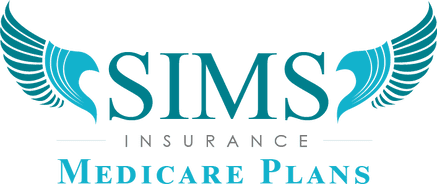If you’re eligible for Medicare based on your own or a spouse’s work record, you likely qualify for premium-free Part A hospital insurance. However, to ensure you have full Medicare coverage, you’ll also need to enroll in Part B medical insurance. Part B helps cover services like doctor visits, outpatient care, and preventive services. But just having Part A doesn’t automatically enroll you in Part B – you need to sign up separately during your Initial Enrollment Period.
Missing this window can result in late fees on future premiums. This guide will explain the process for enrolling in Part B if you’re already receiving Part A benefits. You’ll learn about Medicare’s different enrollment periods and any deadlines to keep in mind. You’ll also find steps to complete the application and understand ongoing premium payment options. Let’s get started to make sure you have comprehensive Medicare coverage.
Understanding Medicare Part B
If you already have Medicare Part A coverage, you
want to consider also enrolling in Medicare Part B. Here’s an overview of what Part B covers and why it’s important to have.
What is Medicare Part B?
Medicare Part B is medical insurance that helps cover medically necessary healthcare services like doctor visits, preventive care, durable medical equipment, mental health services, lab tests, x-rays, and ambulance transportation.
Part B covers 80% of the Medicare-approved amount for covered services after you meet the annual deductible. You would need to pay the remaining 20% coinsurance plus any unapproved charges.
Importance of Medicare Part B
There are several reasons why it’s usually advised to sign up for both Part A and Part B when first eligible:
- Part B covers many vital outpatient and preventive services not covered under the Part A hospital coverage.
- Having both Parts A and B provides more comprehensive coverage and reduces your healthcare costs as a Medicare beneficiary.
- It prevents gaps in coverage and acts as your primary insurance if you don’t have other coverage.
- There are financial penalties for delaying Part B enrollment if you go without other adequate insurance.
Initial Enrollment Period for Medicare
If you already have Part A, it’s crucial to understand Medicare’s enrollment guidelines for Part B.
When to sign up for Medicare
Your initial enrollment period is a 7-month window around your 65th birthday when you can sign up for Medicare Part A and/or Part B:
- Begins 3 months before your 65th birthday month
- Includes your birth month
- Ends 3 months after your birth month
It’s best to enroll in Parts A and B as soon as you’re eligible to prevent coverage gaps and penalties.
What if you missed your initial enrollment period?
You can still enroll in Medicare Part B during the annual General Enrollment Period from January 1 to March 31 each year. But in most cases, you’ll pay a late enrollment penalty if you didn’t have other adequate insurance.
Applying for Medicare Part B
To add Part B, you’ll need to complete an application through either Social Security or your local Medicare office during an enrollment period.
Enrollment Options and Procedures
Here are the steps to take for enrolling in Medicare Part B based on your situation:
Enrolling in Medicare Part B through Social Security
If you already receive Social Security retirement benefits, your enrollment will be automatic when eligible at 65. You’ll be notified of your Part B start date and premium deductions from your benefit check.
If you aren’t receiving Social Security yet, you’ll have to manually apply by:
- Completing Form CMS-40B through your local Social Security office.
- Applying online at the SSA website if you have an account.
- Calling Social Security at 1-800-772-1213.
Other ways to sign up for Medicare Part B
If you don’t get Social Security benefits, you can also:
- Apply at your local Medicare office.
- Apply through your state Medicaid office if you have Medicaid benefits.
- Use Form CMS-40B to apply by mail or fax.
In most cases, it takes 1-3 months for Medicare to process Part B applications.
Medicare Part B Late Enrollment Penalty
If you didn’t sign up for Part B during your first eligibility window, you’ll likely pay a late penalty when you do enroll.
Understanding the late enrollment penalty
The late enrollment penalty is 10% of the current Part B standard premium for every 12-month period that you delayed enrolling without having other adequate health coverage.
For example, if you wait 3 years to sign up, you’ll pay a 30% penalty (10% x 3 years). This penalty amount is added on top of your monthly Part B premium.
Avoiding the late enrollment penalty
You can avoid the penalty if:
- You enroll during your initial enrollment period.
- You had qualifying health coverage like an employer group health plan during your delay period.
- You receive Medicare prior to age 65 due to disability.
Special Circumstances and Eligibility
Certain situations provide options for when and how to enroll in Medicare Part B.
Job-based health coverage and signing up for Part B
If you have group health insurance through your job or a spouse’s job, you can delay Part B enrollment without penalty to avoid premium costs for duplicate coverage.
You get an 8-month special enrollment period to add Part B penalty-free that begins when you lose your other coverage.
Turning 65 with existing health coverage
If you have non-group health coverage like an individual health insurance plan or retiree coverage when you turn 65, you may want to add Part B to make it your primary coverage.
You can delay Part B enrollment if you want to maintain your existing coverage temporarily. But the special enrollment period is shorter and late penalties can apply if you don’t have group coverage.
Cost-saving programs for Medicare Part B
If you have limited income and resources, programs like Medicaid and Medicare Savings Programs can help pay your Part B premiums and reduce other Original Medicare costs.
Conclusion
In summary, it’s wise for most people to enroll in both Medicare Part A and Part B coverage during their initial enrollment period at age 65 to prevent gaps in coverage and financial penalties. Understanding the costs, benefits, and coverage rules of each part is key to making an informed Medicare enrollment decision.
We’re Here to Help
You do not have to spend hours reading articles on the internet to get answers to your Medicare questions. Give Scott Sims at Sims Insurance Medicare Plans a Call at (541) 915-0939. You will get the answers you seek in a matter of minutes, with no pressure and no sales pitch. We are truly here to help.
FAQs
How do I add Medicare Part B if I already have Part A?
If you already have Medicare Part A and want to sign up for Part B, you can do so during a special enrollment period or the general enrollment period. The special enrollment period allows you to sign up for Part B without penalty if you have group health plan coverage through your job or your spouse’s job. The general enrollment period runs from January 1 to March 31 and is for individuals who didn’t sign up for Part B when they were first eligible.
What are the options to sign up for Medicare Part B?
There are a few options to sign up for Medicare Part B. You can apply for Part B online at the Social Security website, visit your local Social Security office and apply in person, or call Social Security and apply over the phone. Additionally, if you’re already receiving Social Security or Railroad Retirement Board benefits, you will be automatically enrolled in Medicare Part B.
When should I sign up for Medicare Part B?
You should sign up for Medicare Part B during your initial enrollment period, which begins three months before the month you turn 65 and ends three months after the month you turn 65. If you miss this initial enrollment period, you can sign up during the general enrollment period, but you may have to pay a late enrollment penalty.
Can I sign up for Medicare Part B if I have job-based health coverage?
Yes, you can sign up for Medicare Part B if you have job-based health coverage. However, it’s important to understand that your job-based health coverage may have different rules for when to enroll in Medicare. It’s recommended to speak with your employer or benefits administrator to understand how your job-based health coverage works with Medicare.
Can I get Medicare Part B if I’m already enrolled in Medicare Advantage?
If you’re already enrolled in a Medicare Advantage Plan, you generally don’t need to separately enroll in Medicare Part B. Medicare Advantage Plans provide all the benefits of Original Medicare (Part A and Part B) and may offer additional coverage such as prescription drugs. However, it’s always a good idea to review your Medicare Advantage Plan’s rules and coverage to ensure you have the health coverage you need.
How much does Medicare Part B cost?
The premium for Medicare Part B is set each year by the Centers for Medicare & Medicaid Services (CMS). The standard monthly premium amount for Part B in 2021 is $148.50. However, the actual premium you pay may be higher based on your income. Medicare also has cost-saving programs to help individuals with limited income and resources pay for Medicare Part B.
Can I get prescription drug coverage with Medicare Part B?
No, Medicare Part B does not provide prescription drug coverage. To get prescription drug coverage, you can enroll in a standalone Medicare Part D prescription drug plan or choose a Medicare Advantage Plan that includes prescription drug coverage.
What happens if my job-based health coverage ends before I sign up for Medicare Part B?
If your job-based health coverage ends before you sign up for Medicare Part B, you will have a special enrollment period to sign up for Part B. This special enrollment period lasts for eight months after your group health plan coverage ends. It’s important to enroll in Part B during this special enrollment period to avoid a gap in your health coverage.
How do I apply for Social Security disability benefits and get Medicare?
To apply for Social Security disability benefits and get Medicare, you need to complete Section B of the application for Social Security disability benefits. This section allows you to indicate that you want to apply for Medicare as well. If you’re approved for Social Security disability benefits, you will be automatically enrolled in Medicare after receiving disability benefits for 24 months.
When does the General Enrollment Period for Medicare Part B start and end?
The General Enrollment Period for Medicare Part B starts on January 1 and ends on March 31 each year. During this period, individuals who didn’t enroll in Part B during their initial enrollment period have the opportunity to sign up for Part B. Keep in mind that if you enroll during the General Enrollment Period, your coverage will begin on July 1 of that year.


